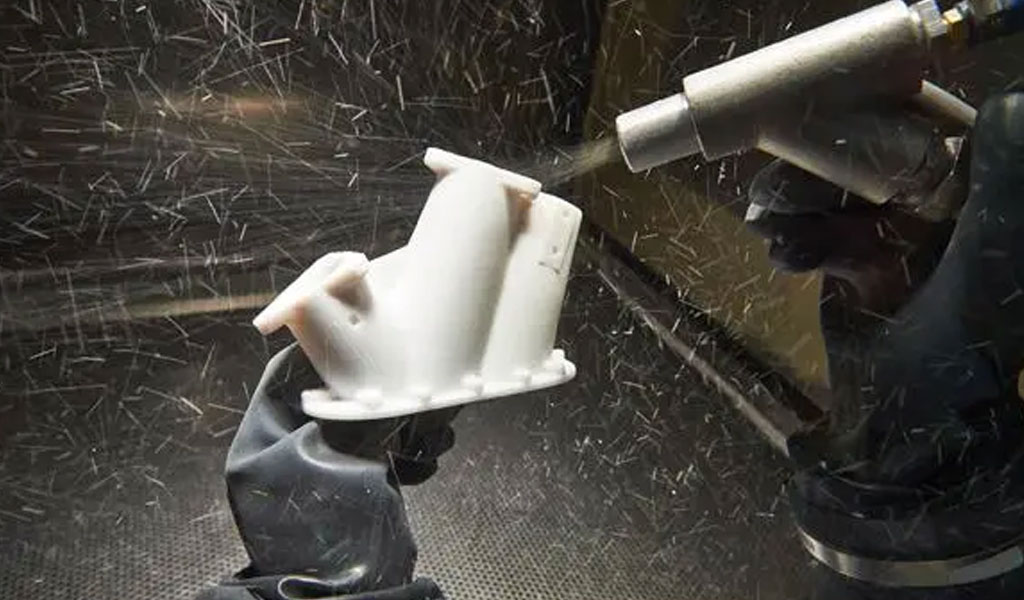Vapor polishing is a surface finishing technique used to improve the appearance and smoothness of plastic parts,especially 3D printing.

What is Vapor Polishing?
Vapor polishing involves exposing the plastic part to a solvent vapor, typically a chemical such as acetone. The solvent vapor reacts with the surface of the plastic, causing it to slightly soften and melt. As the plastic re-solidifies, it forms a smoother and more polished surface.
The process of vapor polishing typically involves placing the plastic part in a chamber or container, adding a small amount of solvent, and allowing the vapor to circulate and interact with the surface of the part. The duration of the vapor exposure varies depending on the desired level of polishing and the type of plastic being treated.
Vapor polishing is commonly used in industries such as automotive, electronics, and medical devices, where high-quality surface finishes are desired. It can help to remove surface imperfections, such as roughness, scratches, and visible layer lines from 3D printed parts. However, it’s important to note that not all types of plastics are suitable for vapor polishing, as some may not react well to the solvents or may require specific conditions for optimal results. Therefore, it is recommended to consult manufacturer guidelines or seek professional assistance when considering vapor polishing for a specific plastic part.
What Chemical Is Used for Vapor Polishing?
Acetone is the most commonly used chemical for vapor polishing. Acetone is a volatile organic compound (VOC) that acts as a solvent for many types of plastics. When exposed to acetone vapor, certain plastics, such as ABS (acrylonitrile butadiene styrene), polycarbonate, and some acrylics, can undergo a controlled softening and re-solidification process, resulting in improved surface smoothness and a glossy finish.
Apart from acetone, other solvents such as methyl ethyl ketone (MEK) and ethyl acetate may also be used for vapor polishing, depending on the specific type of plastic being treated. These solvents have similar effects on plastic surfaces, helping to melt and reflow the plastic, thereby reducing surface imperfections.
It’s important to note that the selection of the chemical for vapor polishing should be based on the compatibility with the plastic being treated, as different plastics have varying sensitivities to solvents. It’s always advisable to refer to manufacturer guidelines, safety data sheets (SDS), or seek professional advice to ensure the appropriate chemical is used for vapor polishing a specific plastic part. Additionally, proper safety precautions, such as working in a well-ventilated area and following recommended safety practices, should be followed when working with solvents.
What Materials Can Be Vapor Polished?
Not all materials are suitable for vapor polishing, it is primarily used for thermoplastic materials, the solvent may have different effects or may not be compatible with certain plastics.
- ABS (acrylonitrile butadiene styrene): ABS is a commonly vapor polished material. It is used in various applications, including automotive components, consumer goods, and 3D-printed parts.
- Polycarbonate (PC): Polycarbonate is another popular material for vapor polishing. It is known for its high impact resistance and transparency, making it suitable for applications such as safety goggles, automotive lenses, and electronic components.
- Acrylic (PMMA): Acrylic, also known as polymethyl methacrylate, is a transparent plastic widely used in applications such as signage, display cases, and lighting fixtures. It can be vapor polished to achieve a smooth and glossy finish.
- Some other plastics: While less common, certain types of plastics, such as polystyrene (PS) and polymethylpentene (PMP), can also undergo vapor polishing, albeit with varying degrees of effectiveness.
Can you vapor polish acrylic?.
Yes, acrylic (PMMA), also known as polymethyl methacrylate, is a material that can be vapor polished. Acrylic is a transparent thermoplastic widely used in various applications, including signage, display cases, and lighting fixtures.
Vapor polishing acrylic involves exposing the surface of the acrylic part to a solvent vapor, typically acetone. The acetone vapor causes the surface of the acrylic to slightly soften and reflow, resulting in improved smoothness and a glossy finish. The process helps to reduce surface imperfections such as scratches and visible layer lines, resulting in an enhanced appearance.
It’s important to note that the effectiveness of vapor polishing acrylic may vary based on factors such as the thickness of the acrylic, the quality of the material, and the specific solvent used. It is recommended to follow manufacturer guidelines, safety data sheets (SDS), or seek professional advice to ensure proper vapor polishing techniques and safety precautions are followed when working with acrylic or any other material.
The Applications Of Vapor Polishing in Various Industries
Vapor polishing has applications in various industries where achieving a high-quality surface finish is important.
- Automotive: Vapor polishing is commonly used in the automotive industry for polishing plastic components such as interior trim, instrument panels, and exterior parts. It helps achieve a smooth, glossy surface finish and enhances the overall appearance of the vehicle’s interior and exterior.
- Electronics: Vapor polishing is employed in the electronics industry for polishing plastic parts used in electronic devices, including casings, bezels, and display screens. It helps to achieve a visually appealing finish, improves light transmission in display panels, and enhances the overall aesthetics of electronic products.
- Medical devices: Vapor polishing plays a role in the medical device industry where smooth and clean surfaces are crucial. It is used for polishing plastic components in medical devices such as housings, connectors, and instrument handles, improving the cleanliness, hygiene, and overall appearance of the devices.
- Consumer goods: Vapor polishing is utilized in the production of various consumer goods, such as household appliances, consumer electronics, and personal care products. It helps enhance the surface finish of plastic parts, making them more visually appealing and improving the user experience.
- Prototyping and 3D printing: Vapor polishing is often employed in the prototyping and 3D printing industry, especially with materials like ABS and polycarbonate. It helps to smooth out the surface of 3D-printed parts, reducing visible layer lines and achieving a more polished appearance.
